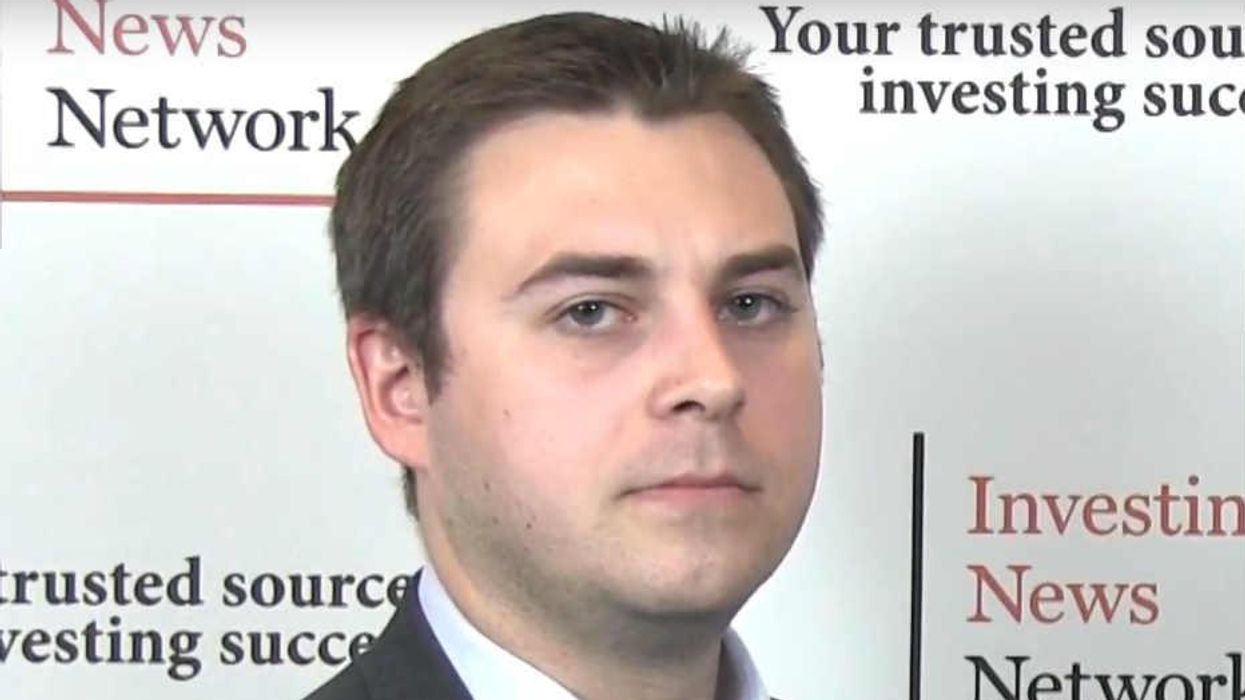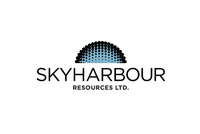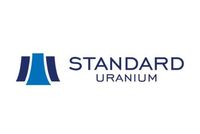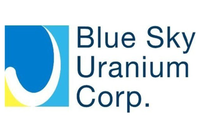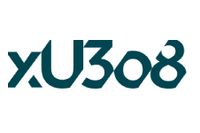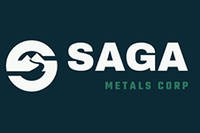Jordan Trimble of Skyharbour Resources: "We’re in the Early Days of a Uranium Market Recovery"
Jordan Trimble, president and CEO of Skyharbour Resources, talks about his company’s exploration projects and the uranium market.
Skyharbour Resources (TSXV:SYH) President and CEO Jordan Trimble gave a company presentation and participated in two panels at the recent International Metal Writers Conference in Vancouver. In the midst of the busy show, Trimble took some time to talk to the Investing News Network about Skyharbour’s uranium and thorium exploration projects in Saskatchewan’s Athabasca Basin.
Skyharbour has interests in five projects covering over 250,000 hectares in the region. In June last year, the firm secured an option to buy Denison Mines’ (TSX:DML,NYSEMKT:DNN) Moore Lake uranium project on the southeastern side of the Athabasca Basin. Trimble said results of the company’s winter drill program revealed 21 percent U3O8 over a meter and a half, plus “a high-grade pod” with 9 percent U3O8 over a meter and a half.
He also said Skyharbour is fully funded for its summer 2017 and January to March 2018 drill programs. In March, the company reached option agreements with Areva (EPA:AREVA) and Azincourt Uranium (TSXV:AAZ) to advance exploration at the Preston uranium project.
Trimble on uranium market
Trimble said he believes the uranium market has reached its bottom, and that most analysts predict the price will have to hit $55 to $65 a pound to incentivize new production to come online. He explained that new larger reactors are being built that require more uranium to operate, and nuclear utilities will need to renew their supply contracts in the next few years.
He added that nuclear energy is really the only source of electricity that provides 24/7 base load power with zero carbon emissions, and said it can be part of the solution to the air-quality issues that various countries are facing.
The transcript for this interview can be found below.
INN: Tell me about your company. What are some of the projects you are working on?
JT: Skyharbour Resources uranium and thorium exploration and early stage development company with projects in the Athabasca Basin – number one mining jurisdiction in the world now ranked by the Fraser Institute. What we’ve done over the last four years my geologist Rick Kusmirski based in Saskatoon him and I have gone out there and acquired over 200,000 hectares of property, five projects scattered throughout the Athabasca Basin at various stages of exploration – really tried to take advantage of a depressed uranium market. We’ve been able to acquire these projects at attractive valuations and really built up a strong portfolio.
We did a deal just under a year ago with Denison Mines. They’re our largest shareholder strategic partner. The president CEO of the company David Cates came on our board and we acquired a project called the Moore Uranium Project. There’s a lot of history there. My head geologist Rick and his team made a high grade discovery there in the early 2000s so we’re going back in. We just finished a 5500 meter first phase winter drill program some very high grade drill results including 21 percent U308 over a meter and a half within a longer zone, as well as a new discovery actually a new high grade pod where we drilled nine percent over about a meter and a half as well.
We’re having some early success with the drilling there. It’s shallow, high grade uranium mineralization. We’re going back in in the summer with another program which we’re fully funded for as well as next winter January 2018 through March, which we’re also fully funded for – we just raised some money at 60 cents mostly institutional investors so just under $4 million in the treasury. Looking to get back to work there.
What we’re also doing with the other projects, there’s four other projects that we have is we’re employing the prospect generator model. We’re bringing in strategic partners – other companies that are funding the exploration. Skyharbour will get some cash and some stock from these companies so we do get some cash flow on an annual basis from these option payments. One of the notable partners that we did a deal with earlier this year is Areva out of France, and so Areva as an industry leader, a large company in France, They’re coming in on a project that we have called the Preston Project, which is over on the west side of the base in by Fission (TSXV:FCU) and NexGen (TSX:NXE), and they’re spending 8 million dollars over a six-year period to earn in 70 percent of that project. We did another deal with a company called Azincourt, a similar deal for them to earn in 70 percent. It’s a three year deal, three and a half million. Most of that in exploration expenditures as well as some stock as well. So it’s unique in that we have the discovery potential at our Flagship Moore project which is on the east side of the basin very close to Dennison’s flagship Wheeler – lots of good infrastructure there. Its high grade shallow uranium mineralization. Lots of upside potential still. But we also have this secondary strategy of the prospect generator.
INN: Can you talk a little bit about the uranium market right now? We’ve been hearing a lot throughout this conference about prices being a little bit too low to kind of take off but things might change in the future. Can you talk about that?
JT: We’re hoping so. No it’s been a volatile market, which isn’t unexpected. We typically do see this at tops and bottoms of markets. I believe we are near or at the bottom for the uranium market. If you look at just the long-term fundamentals for the commodity it’s very compelling. The simple fact right now is that at 19, $20 uranium, that’s where the spot market is, you don’t have one mine in the world that makes money. That’s break even. The lowest cost producing mine, a mine in Kazakhstan, is break even at higher prices and that’s just the operating costs. If you look at the price needed for the commodity to incentivize new production to come online – most analysts are forecasting 55 to $65 uranium just to bring new supply on and new mines to come online. So there really isn’t any significant new mine supply slated to come on in the next five years to meet this growing demand. The demand side of it is pretty steady. We know these new reactors in China and India and other parts of the developing world are coming on there’s 59 reactors under construction today. Many hundreds more are planned, ordered and proposed. These new reactors are much larger they consume a lot more uranium. We also have with the current reactor base and the current nuclear utilities – expiring contracts. You hear about this these uncommitted requirements. What that means is that five, six, seven, years from now you’re going to have the vast majority of the current contracts that these nuclear utilities get the uranium from expiring.
So they’re going to have to go back. There’s going to be a new contracting cycle. This was one of the reasons in 2004 to 2007 we saw the price increase from under $20 a pound to over $130 a pound. So you have a confluence of factors that I think will be very bullish for the price of the commodity. In the near term here, the Japanese restarts is an important catalyst but also on the supply side Kazakhstan. Kazakhstan produces 40 percent of the world’s uranium. They just announced a 10 percent production cut but they really feel the squeeze when the spot price is as low as it is. They’re not making money at their mines. So if we see any other additional production cuts from Kazakhstan or even other parts of the world other companies are responding to these low prices by production cuts as well. Cameco did it recently. So if we see more supply cuts that’ll be positive for the price uranium as well.
INN: Can you talk a little bit about some of the differences between uranium and thorium with India looking towards developing new reactors that use thorium?
JT: So we have on one of our projects called Falcon Point. We own 100 percent of it. We have both a uranium and a thorium resource 43-101 compliant. We’re one of the few companies that does have a thorium resource. Thorium is a real interesting commodity. It’s being talked about as a potential replacement or substitute for uranium and nuclear reactors. It hasn’t been commercialized yet. First and foremost we are a uranium company. We do have this thorium component though. It’s probably a few years out. There’s been lots of media attention around it TED Talks and the like on thorium, and there are some characteristics of thorium – one being that it has a much higher melting point than uranium that makes it safer potentially. But a lot of people don’t know this to get a thorium reactor started to get the actual fission reaction under way you would need uranium to do that. Uranium is the only naturally occurring self-fissile element that we can find in the earth’s crust. So you could get the reaction started but you need uranium to do that and then you’d use thorium thereafter.
INN: You were on the panel yesterday about young leaders. Can you talk a little bit about that being kind of a younger CEO?
JT: It was a great panel. I was fortunate enough to be up there with some heavy hitters like Steve J. Young and Daniel Flaherty and Andrew Pollard was the moderator. I think the takeaway from that was we look at our industry we can clearly see a big generational gap. Mining has been a bit of an archaic industry. It hasn’t really adapted as much as other industries have with new technologies, big data and if you look at the things coming down the pipe, AI, machine learning; I think there’s an incredible opportunity to take some of these new technologies and innovations and apply them to mining. There’s lots of new technologies being talked about. I know with our team my head geologist Rick Kusmirski, Christina McKechnie, Dave Billard some of our geologists, we’re looking at employing some of these new exploration techniques and innovations to make new discoveries on our projects and delineate resources on our projects. But I think as a whole the industry there’s going to be a big shift in the next 10 to 20 years where we’re going to see technology play a much bigger role in the exploration development and mining processes.
INN: Is there anything else that you want to mention?
JT: I think we covered it all. As I said, we’re actively exploring right now – fully funded. We had some early success with the drilling at our Flagship Moore Project. We’re looking to bring in additional partners, strategic partners on some of our other secondary projects. We don’t want them sitting there collecting dust. We do want to see them advance and that’s the best way to do that– the least dilutive way to do that is through brining other companies having done a deal with industry leader Areva. That’s a great precedent. As I mentioned earlier we have the strategic partnership a large shareholder with Denison Mines. There’s a lot of operational synergies at our Moore project with Wheeler their Flagship being about 15 to 20 kilometers away. So we’re excited to get back to work. I really do believe we’re at the early, early, days of a uranium market recovery. When you look at the supply or lack thereof coming online. You look at the demand coming online over the next five to 10 years with the reactor build up in China and India. You got to remember, this is an environmental thing. We need to create electricity from base load power meaning 24/7 electricity from CO2 free sources and nuclear really still is the only source of electricity that’s 24/7 base load power that’s zero carbon emitting. So that’s a very important point. We take for granted here in North America and Western Europe the clean air that we breathe on a daily basis but air quality is a big issue in other parts of the world that nuclear is going to be an important part of that solution important part of the energy mix going forward. There’s also some new advanced nuclear technologies. Modular reactors, molten salt reactors, that some well-known investors and thought leaders are putting money into right now that could be the new wave of reactors in North America and Western Europe. So I do see there being more demand in the Western world as well eventually.
Don’t forget to follow us @INN_Resource for real-time news updates!
Securities Disclosure: I, Melissa Shaw, hold no direct investment interest in any company mentioned in this article.
The Investing News Network does not guarantee the accuracy or thoroughness of the information reported in the interviews it conducts. The opinions expressed in these interviews do not reflect the opinions of the Investing News Network and do not constitute investment advice. All readers are encouraged to perform their own due diligence.
Related reading:
International Metal Writers Conference 2017, Day 1: Notes from the Floor
International Metal Writers Conference 2017, Day 2: Notes from the Floor
